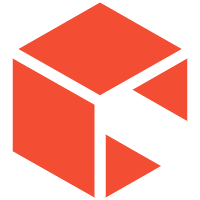U.S. Bank vs. Chase: Which Is Best for You?
Jan 17, 2024 By Triston Martin
JPMorgan Chase is the biggest and most powerful bank in the United States, and the firm's asset portfolio is close to $4 trillion. The competition that it faces, U.S. Bancorp, comes in fifth position. When searching for a place to register an account, it's important to remember that larger ones sometimes indicate better. Although both U.S. Bank and Chase Bank provide customers with many advantages and benefits, it is essential to determine which one is superior to the other in meeting your requirements.
Choose Chase if:
- You wish to initiate the opening of an account without being required first to make a minimum deposit.
- You are seeking a checking account with a lower minimum threshold for direct deposits to avoid the monthly cost.
Choose U.S. Bank if:
- You are a resident of a state where the accounts can be opened.
- You find that having access to customer service through the phone around the clock is most convenient.
- You need access to a bigger network of automated teller machines (ATMs).
Checking and Savings Accounts
When comparing U.S. Bank and Chase Bank, it is important to note that both institutions provide fully-fledged checking and savings accounts, each of which offers benefits and disadvantages that are, for the most part, comparable. But there are a few crucial distinctions between the two. To begin, U.S. Bank is fraught with both positives and negatives.
In every manner, the bank makes things simpler and more convenient for its consumers and presents them with its own set of challenges. The United States provides free checking and savings account options for students, retirees, and other specialized customers. In addition, customers who open a premium checking account at the bank are eligible for free money market accounts.
The Chase bank conducts things in a somewhat different manner. Free checking account opening is available to customers who meet the institution's minimum starting deposit requirement of $25 for any of the company's account products. The monthly fees that are attached to many checking and savings accounts offered by Chase can range anywhere from $5 to $12 or even higher; however, it has been shown that these fees can be waived with greater ease than the fees that are attached to checking and savings accounts offered by U.S. Bank.

Fees
The competition between U.S. Bank and Chase Bank has space for improvement when discovering methods to get around their rising costs. With U.S. Bank, you will need to find a way to work around a high-interest rate on your deposits, particularly at the beginning of your relationship with the bank, and find a way to pay for the extra monthly costs for overdrafts and wire transfers. All of this is to suggest that if you're attempting to save little sums of money here and there, U.S. Bank makes it difficult for you to do so.
Even if you choose not to participate in the majority of the perks to save money initially, this may save you only a little in the long run. You have to fulfill a high minimum balance requirement to qualify for a free checking service offered by U.S. Bank, and you have to keep that requirement in place going forward. You should consider opening an account with Chase if anything like this is out of your reach.
On the other hand, if you bank with Chase, you'll have access to a vast network of ATMs and locations all over the world; however, almost all of Chase's specialized accounts have monthly maintenance costs. Overdraft costs may cost as much as $34 per item if the account is overdrawn for more than a few days.
These fees come in the shape of anything from monthly maintenance fees to late fines. Other costs include wire transfers and ATM fees of $2.50 when using a generic American ATM. A withdrawal from an ATM in a foreign country will cost you $5, in addition to $2.50, for checking your balance and transferring money.
Rates

When comparing U.S. Bank and Chase Bank, it's important to note that U.S. Bank offers competitive CD and money market account rates. However, because U.S. Bank is required to maintain a large branch network, its standard interest rates cannot nearly compete with the far higher rates offered by banks that primarily do their business online and via mobile applications.
Banking online or with a digital credit union is most likely going to be your best choice, at least in terms of the rates that are available to you, unless it is of crucial necessity for you to deal with a bank that has a significant physical presence and a branch near you.
-
 Savings Sep 22, 2024
Savings Sep 22, 2024Boost Your Savings: 5 Smart Strategies Using Automatic Transfers
Discover effective savings strategies to achieve your financial goals, including automation tips and regular monitoring for long-term success.
-
 Know-how Feb 07, 2024
Know-how Feb 07, 2024Save Money on a Tight Budget
You may keep more money by looking into your expenditures and negotiating with creditors and service providers. Below you will find how to save more money on a tight budget.
-
 Taxes Feb 10, 2024
Taxes Feb 10, 2024Rules for Traditional and Roth IRA contributions
Consider your retirement savings goals and financial strategy when choosing between a Traditional and Roth IRA. Learn the rules, eligibility requirements, and contribution limits to make an informed decision.
-
 Know-how Dec 27, 2023
Know-how Dec 27, 2023How Does The Federal Funds Rate Operates and Its Effects
Fed Funds Rate = FOMC Target Rate. Overnight, commercial banks lend and borrow from one another using their excess reserves, and this objective is the interest rate at which they do so. The Federal Open Market Committee (FOMC) is the Fed's policymaking body. It convenes eight times a year to determine the Fed's monetary policy goals, including the target federal funds rate.
